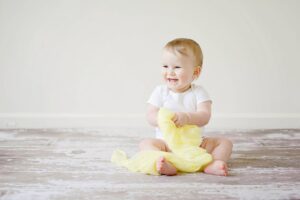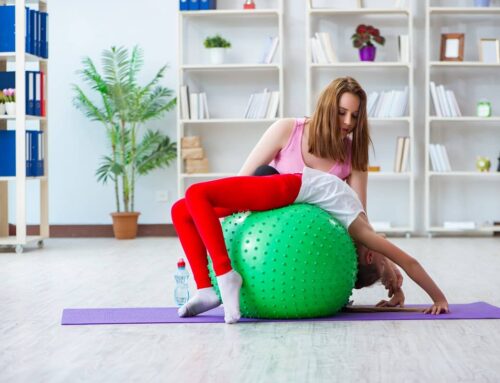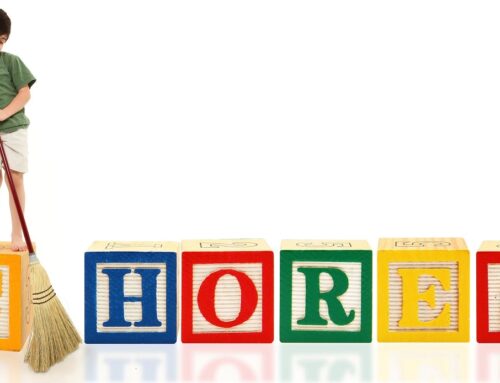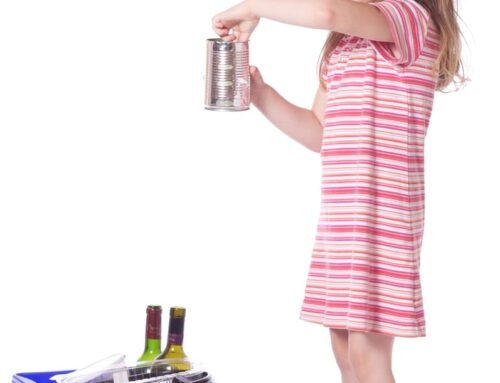There are so many baby brain development activities to do with infants. These learning activities for babies are a combination of activities that will help their language development, numeracy development, brain development, and gross and fine motor skills!
The first year of a baby’s life is exciting and amazing for a Mama. But it can also be a huge adjustment, exhausting, and downright hard. Summit Children’s Center has some ideas for those days when you may need a little inspiration. Hang in there Mama – you are doing great.
 Note: All of these activities are meant for you to experience with your baby. Some of them are not safe for wee ones on their own. Please always enjoy these learning activities for baby brain development with your babes.
Note: All of these activities are meant for you to experience with your baby. Some of them are not safe for wee ones on their own. Please always enjoy these learning activities for baby brain development with your babes.
- Color Learning Bags. Choose one color and put many items of that color in a bag for your baby to explore. When introducing your baby to the color, it is helpful to always put the color word in the same spot of your sentence: “The apple is red”, “The strawberry is red”, “The towel is red.”
- Textile Egg Cartons. Who knew egg cartons could be great baby brain development toys?! Glue different textures to the bottom of an egg carton for your little one to explore. Sandpaper, bubble wrap, cellophane, pom poms, cotton balls, etc.
- Hide- the – anything. Babies love to find things. Hide something under a blanket and when your little one pulls it off, say “you found the cat!”, and so on.
- Scarves in the Kleenex box. Babies love to pull things out. You could simply give your baby a Kleenex box and let the tissues fly, or you could take an empty tissue box and stuff it with scarves or cloths and let your baby pull them out.
- Go for a walk and point out specific things. When you see a squirrel, stop and point to your baby, saying “Do you see that little squirrel, he just ran up the tree”. It is never too early to start doing baby brain development activities including developing language. Of course, it helps if your wee one can see ….
- Lay under a tree. Watching the leaves move is mesmerizing for wee ones. Then turn your baby over and let him explore the grass and leaves
- Play with ice cubes. Put ice cubes on your babe’s highchair tray and let him touch, taste, and melt them – all the while talking with him about how they are so chilly!
- Read. Read simple board books. Books with just one or two words on each page are great for developing words. But also read longer stories as your wee one nurses or has a bottle. This helps improve attention span and also introduces a lot of languages.
- Go to the mall. Let your wee one look at all the different sights, hear all the different sounds, and experience all sorts of things. Be sure to stop by the water fountain if there is one.
- Finger paint with baby food. Early learning activities for babies include food! Give your baby a piece of paper and a variety of baby food to create masterpieces. Apple sauce, sweet potato – whatever you have on hand. This activity helps him develop fine motor control, and experience different textures. Try warming one up, and using that word while he paints. Then take one from the fridge and use the word cold.
- Sing and Rhyme. There are so many fun songs to sing with your little one that can teach simple counting and letters. Some of my favorites are: This Little Piggy Went to Market, Round and Round the Garden, This is the way the Ladies Ride (still one of my 3-year-olds favorites!), The itsy bitsy spider (and the Big Papa spider, etc), 1, 2 Buckle my shoe, The farmer in the Dell, All around the Mulberry Bush
- Bring the snow inside. When the weather brings ice and snow, there are still baby brain development activities for your little on to do! Bring a tub of snow inside. Put a towel down first to prevent too much mess. Offer your wee one mittens if his hands get too chilly! Provide him with some things to “poke the snow” (stick, spoon, etc)
- Bang on pots and pans with wooden spoons. Wee ones will begin to imitate at a very early age. Show your wee one to tap the pot with a wooden spoon, and pretty soon he will be banging (um, I mean of course tapping) right along!
- Turn off the lights and turn on some flashlights. A simple flashlight can be so much fun for playing games with a baby.
- Play peek-a-boo. Hide behind a blanket and peek out and say, “peek” or “boo”. If your baby is old enough to crawl, hide under the blanket and let your little one try to pull the blanket off himself before saying, “peek”. Then hide your baby, pull the blanket off and say “peek” – wait a moment and encourage your wee one to make a noise when he is found. Reward any sound he makes with encouragement, “good for you – that’s right, ‘peek’”
- Fill up the sink with water. Let your wee one put his bare toes in the water or splash his hands. Put a few smart baby toys in there to add some more excitement.
- Create a baby obstacle course. Once your wee one is on the move, line up some kitchen chairs with a blanket over the top and encourage your baby to crawl through (you could go first, or roll a ball or toy through). Put some pillows on the ground for your wee one to crawl over. Use a chair or an ottoman as an obstacle your wee one has to go around.
- Look in a mirror. This is best if you have a mirror that can be leaned against the wall at ground level. Babies love to look at themselves – and their Mamas – in mirrors. When your baby is a little bigger, you can put something on her cheek and see if she tries to remove it.
- Dance. Put on some music and dance with your baby. You may think classical music and baby songs are the only genres for baby brain development music – but also put on some music you love and rock out! Wee ones will begin to learn about rhythm and movement.
- Create a “mouthing bin”. Have a bin full of different, safe, and interesting things for your wee one to put in their mouth. As you know, one of the most prominent ways most babies learn is through exploring with their mouth at this stage. Have a bin full of interesting things: Big metal juice lids (Ben’s favorite!), wooden spoons, spatulas, plastic cups, etc.
- Drive to the country and pull over when you see horses (or cows, pigs). So many baby books refer to farm animals. Let your wee one experience the real thing. It will help her to make connections in her understanding of the animal, and provide her with deeper learning.
- Babble and chat. Have a conversation with your wee one when he is particularly vocal. When he says a sound, reply with “really” or “that is very clever” and pause to allow him to say more. Continue this back and forth to tell your wee one you understand he is trying to communicate. You can also repeat words back to him that sound like his babble. If he says, “Da” you can repeat, “DaDa” or if he says “Ba” you can say, “Ball”
- Feed your baby different temperature foods. This helps your wee one understand what warm and cold mean in yet a different modality. When they taste the cold applesauce, be sure to emphasize the word, “cold” and when it is warm, emphasize the word “warm”. Using the same food at different temperatures is ideal – otherwise, your wee one will get confused that “cold” tastes different than ‘warm”
- Play under and over. Seat your wee one on one side of a small table (on the ground) and yourself on the other. Peek a toy over the table and say over, and then peek it under saying under. You can do this yourself too. Look over the table at your babe and say, “over” and then under, and say it aloud. You can add in a full sentence after a while. “Mommy is over the table. Now mommy is under the table” Babes think this is hilarious! As do friends or adult bystanders.
- Play Head and Shoulders. Touch your babies head, shoulders, knees, and toes as you sing – or change up the words for a bit more common body parts.

baby brain development activities
- Have tummy time. Put your wee one on his tummy and you lie on yours facing him. Encourage him to look at you by making sounds, or shaking toys.
- Talk on the phone. Give your babe an old phone and watch her babble. They really do watch everything we do! My 10-month-old holds the phone to his ear all on his own … wonder where he saw that …. Of course, if you have a grandparent on the other end of that phone, be assured your wee one will not say a peep.
- Squeeze things. Put your babe in his high chair and give him some materials that are a neat texture for squeezing. A wet sponge, a ripe tomato, a piece of banana, some bubble wrap, cellophane, etc.
- Count. Whenever you are doing anything around the house with your wee one, count out loud. “1, 2, 3, 4 cups on the table”. Familiarizing your little one with number words is such an important baby brain development activity.
- Tie a ribbon (oh so loosely) around babes ankle or wrist and the other end to his mobile. When he moves his arm or leg the mobile will move teaching cause and effect. Make sure this one is closely supervised.
- Hide and Seek – Musical Edition. So many toys now play music and are great baby brain development toys. Choose a small familiar musical toy and hide it. First hide it under a pillow, or blanket close to babe for her to find. Then hide it behind the couch, or in the next room and watch her learn to track that sound!
- Pull the sheets over both your heads in bed. Lay down with babe and pull the sheet over you both, just a little above your babe’s body. Encourage him to kick the sheet and swat it with his hands. This encourages gross motor skills.
- Bump up and Down in your Little Red Wagon.
- Open a box at both ends and roll a ball through. It may sound too simple, but this baby brain development activity will help your wee one develop object permanence. They will begin to anticipate that even though they cannot see the ball when it’s in the box, they understand it still exists and will roll out the other side. You will know when this is developing in your babe as he will turn his head expecting the ball to come rolling out the other side
- Go to the pet store and look at the fish. Babies love fish. This visit provides a great time to chat with your child about all the colors she sees.
- Go on a scavenger hunt. Bring your babe with you as you walk around searching for soft things. When you find something soft, tell her and let her touch it – then find some more. You can do this for lots of things!
- Startle Peek a Boo. Perhaps this is just my kids, but all 3 have loved it. I lay down with them and when they make a sound, “ah” I jump and pretend I have been terribly startled. Then they laugh hysterically and make the sound again. Repeat. And repeat. (And repeat).
- Play with your pets. If you have any pets in your home you have likely noticed your baby shows an interest in them. Let him pet them and teach him the word “gentle”.
- Comfort Bin. Create a soft and snugly bin for your baby when she is tired and irritable. Put soft and cuddly items together for her to explore and snuggle. Blankets, stuffed toys, soft cloths, etc. Try to choose items without high contrasting colors, so this is a calming bin.
- Build a small tower with 3 or so blocks. Position it in a way that your baby can see it and kick it. Or put your baby on his tummy and allow his to try to knock it over with his hands. After a few accidental bumps, it may become more purposeful.
- Play with Balloons (in Nylons). Babies love balloons. Allow them to explore these fascinating objects in a safer way by placing the balloons in nylons. Should the balloon accidentally pop, all pieces are safely contained.
- Whisper. When it is quiet time (or you want it to be quiet time!) whisper to your wee one. Tell her it is quiet time and introduce her to the concept of ‘quiet’. This may benefit you in the next two years!
- Stretch. Gently stretch the arms and legs of your wee one. This is such an easy baby brain development activity to do throughout your day!
- Feed the ducks. Sit your babe on your lap at a park and see how close you can get the ducks to come as you feed them. Imitate the sound they make and encourage your baby to imitate too.
- Handprint Art. Babies are simply not babies long enough! Preserve their little handprints and make it a fun learning activity too. You can practice colors and allow your little one to experience the sensation of paint on her hands. Let her squeeze her hands close and clap them together. Adding dish soap or baby soap to the paint makes clean up a breeze. Especially if the babe is only in a diaper.
- Footprint art. Same as above except using her sweet little toesies! She can wiggle her little toes at the feeling and you can get a few great prints to keep or give as gifts.
- Go to the Park. Babies usually loving being around bigger kids. Head to your local park to let your little one take in all the sights and sounds. Bigger kids tend to be drawn to babies too, so your wee one will likely get some up-close encounters with the wild ones.
- Make High Contrast Pictures. Wee babies can spend minutes (well they are babies – don’t expect too much from their attention span!) staring at high contrast pictures. Take a piece of white paper and a black marker for this early learning activity. Nothing fancy is required. A few squiggly lines, zigzags, or a heart are perfect.

summit children’s center baby brain development
- Make Musical Instruments. More DIY baby brain development activities! Take an empty and dry water bottle and add beans, dry noodles, or elastic bands to make musical shakers with different sounds. Put on some music and encourage your baby to shake along to the beat.
- Make Tactile Baggies (only if your wee one does not have teeth). Fill Ziploc baggies with different things: dish soap, conditioner, shaving cream, paint, or beans. Hot glue the top of the Ziploc bag and of course use careful supervision.
All of these baby brain development activities will help your baby develop in many areas. Another important activity (for babe and for Mama) is napping. Wee one’s consolidate what they have learned while they sleep. And Mama’s – well every Mama I know deserves a good nap.
I hope these ideas for early learning activities for babies will provide you with a little support on both those super fun days and those days that just seem to keep going! Summit Children’s Center is here to help in all the early stages of your little one.




